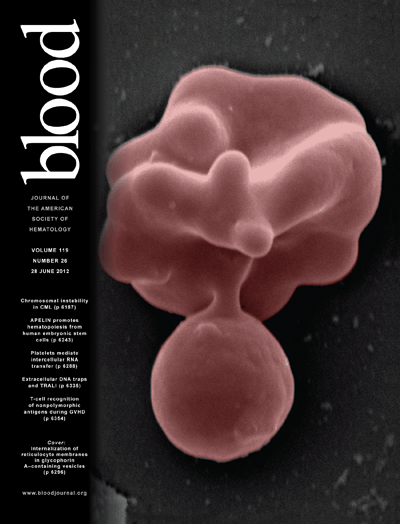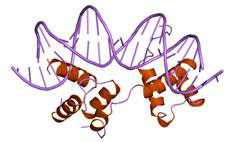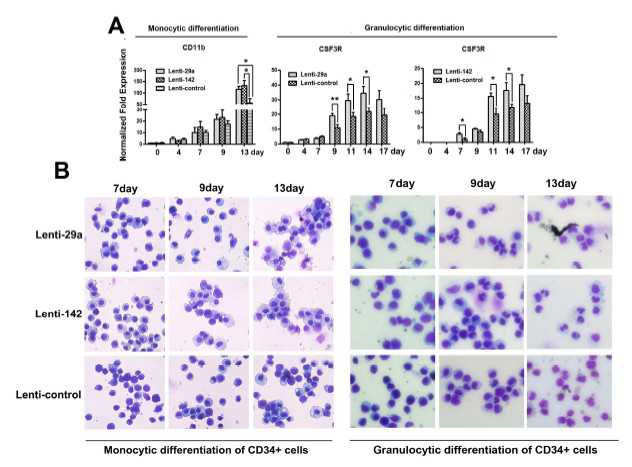Blood:体外无限量制造人体红细胞和血小板新方法
2013-06-03 Blood 生物360
临床上使用的红细胞和血小板一般是来自于献血,因此医院可能会在一段时间内出现“血荒”。 近日,波士顿大学医学院(Boston University School of Medicine)等机构的科学家们开发了一个新方法,成功使诱导多能干细胞(iPS)分化成为这两种细胞,能够在体外无限量制造人体红细胞和血小板。这一研究有望减少人们对献血的依赖,同时帮助科学家对多种疾病进行研究,例如镰状细胞病。相关研
临床上使用的红细胞和血小板一般是来自于献血,因此医院可能会在一段时间内出现“血荒”。
近日,波士顿大学医学院(Boston University School of Medicine)等机构的科学家们开发了一个新方法,成功使诱导多能干细胞(iPS)分化成为这两种细胞,能够在体外无限量制造人体红细胞和血小板。这一研究有望减少人们对献血的依赖,同时帮助科学家对多种疾病进行研究,例如镰状细胞病。相关研究论文刊登在了近期出版的《Blood》杂志上。
iPS技术是指将成体细胞重编程为干细胞状态,使其具备分化为不同类型细胞的能力。这一技术可以利用患者的成熟体细胞(如皮肤或血细胞),生成特定的细胞和组织。iPS技术制造的细胞不会引起不当的免疫反应,既是生物学研究的有力工具,又是再生医学的宝贵资源。
研究人员利用专利技术,将iPS细胞成功分化成为红细胞和血小板,并深入分析了血细胞的形成。在此基础上,人们可以进一步理解机体中血细胞生成的调节机制。
这一新技术使用的是能够调节芳香烃受体AhR通路的化合物。此前的研究显示,环境毒素能够通过与AhR通路,促进癌细胞的发展。而研究人员发现,添加调节AhR通路的化合物,能够在短时间内使红细胞和血小板的产量发生指数级增长。这说明AhR在血细胞的正常发育中具有重要作用。
研究人员表示,这一技术能帮我们克服障碍,在实验室中生产足够的细胞来进行治疗,此外研究结果还指出,在体内的血细胞形成机制中,AhR具有非常重要的生物学功能。
目前,输血是一种不可或缺的治疗方式。而输血的安全性和血液供给不足一直是世界性的问题。由于血型差异,即使是在发达国家,一些患者所需要的血液依然短缺。另外,天灾人祸也会导致血液供应短缺。
研究人员表示,通过iPS技术为患者量身定做红细胞和血小板,可以解决免疫原性和血液污染等问题。将这些细胞用于治疗,将有望减少医疗界目前对献血的依赖,避免因血液供给短缺而造成的损失。
iPS技术生成的细胞可以用来构建疾病研究模型,帮助人们进一步理解疾病,开发新的治疗方式。iPS技术生成的血细胞,可以用来研究疟疾和镰状细胞贫血,而iPS技术生成的血小板,可以用来研究心血管疾病和治疗凝血障碍。

The aryl hydrocarbon receptor directs hematopoietic progenitor cell expansion and differentiation
Abstract
The evolutionarily conserved aryl hydrocarbon receptor (AhR) has been studied for its role in environmental chemical-induced toxicity. However, recent studies demonstrate that the AhR may regulate the hematopoietic and immune systems during development in a cell-specific manner. These results, together with the absence of an in vitro model system enabling production of large numbers of primary human hematopoietic progenitor cells (HPs) capable of differentiating into megakaryocyte- and erythroid-lineage cells, motivated us to determine if AhR modulation could facilitate both progenitor cell expansion and megakaryocyte and erythroid cell differentiation. Using a novel, iPSC-based, chemically-defined, serum and feeder cell-free culture system, we show that a functional AhR is expressed in HPs, and that remarkably, AhR activation in these HPs drives an unprecedented expansion of HPs, megakaryocyte- and erythroid-lineage cells. Further AhR modulation within rapidly expanding progenitor cell populations directs cell fate, with chronic AhR agonism permissive to erythroid differentiation and acute antagonism favoring megakaryocyte specification. These results highlight the development of a new, GMP-compliant platform for generating virtually unlimited numbers of human HPs with which to scrutinize red blood cell and platelet development, including the assessment of the role of this environmental chemical receptor in critical cell fate decisions during hematopoiesis.
本网站所有内容来源注明为“梅斯医学”或“MedSci原创”的文字、图片和音视频资料,版权均属于梅斯医学所有。非经授权,任何媒体、网站或个人不得转载,授权转载时须注明来源为“梅斯医学”。其它来源的文章系转载文章,或“梅斯号”自媒体发布的文章,仅系出于传递更多信息之目的,本站仅负责审核内容合规,其内容不代表本站立场,本站不负责内容的准确性和版权。如果存在侵权、或不希望被转载的媒体或个人可与我们联系,我们将立即进行删除处理。
在此留言













#新方法#
74
#红细胞#
74